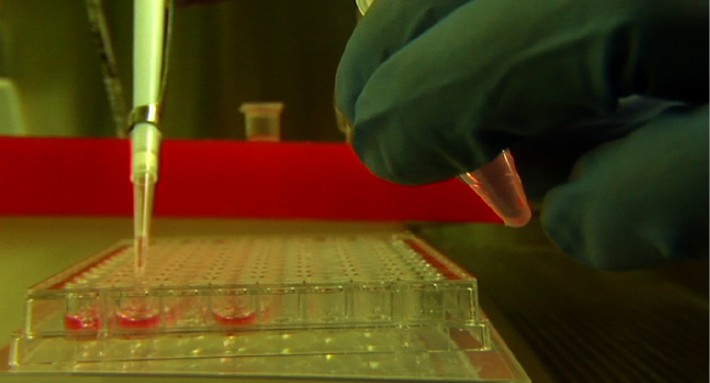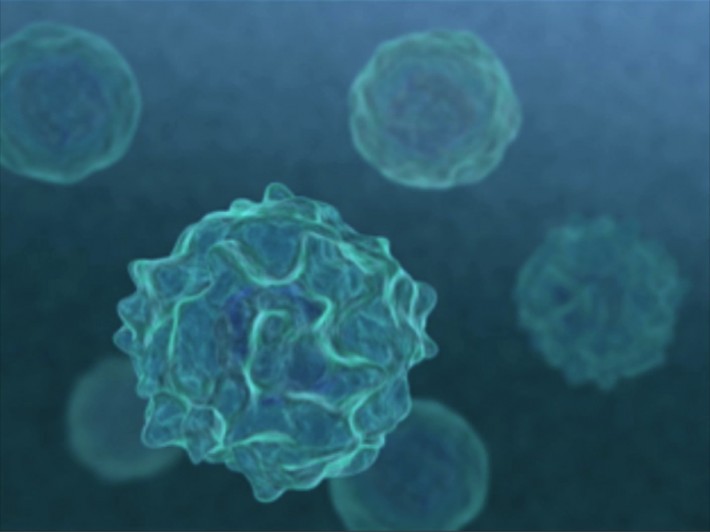JoVE, the Journal of Visualized Experiments, was established in October 2006 as the first online journal devoted to video-publication of biological and biomedical research with the aim of improving the productivity of biomedical research. In July 2013 JoVE published its 2500th video article. Dr Moshe Pritsker, co-founder and CEO of JoVE, provides an overview.
N.B. This article first appeared in Viewfinder 75.
 About the Author: Dr. Pritsker developed the JoVE idea based on his deep familiarity with current problems in biological research, acquired through more than 10 years of work in this area. He holds a Ph.D. in Molecular Biology from Princeton University and an M.Sc. in Chemistry from the Weizmann Institute of Science. Results of his research on stem cells, genomics, bioinformatics and HIV have been published in leading scientific journals (PNAS, JBC, Genome Research and Biochemistry) as well as in patent applications. Prior to co-founding JoVE, Dr. Pritsker held the position of post-doctoral researcher at Harvard Medical School/Massachusetts General Hospital.
About the Author: Dr. Pritsker developed the JoVE idea based on his deep familiarity with current problems in biological research, acquired through more than 10 years of work in this area. He holds a Ph.D. in Molecular Biology from Princeton University and an M.Sc. in Chemistry from the Weizmann Institute of Science. Results of his research on stem cells, genomics, bioinformatics and HIV have been published in leading scientific journals (PNAS, JBC, Genome Research and Biochemistry) as well as in patent applications. Prior to co-founding JoVE, Dr. Pritsker held the position of post-doctoral researcher at Harvard Medical School/Massachusetts General Hospital.
Every practising researcher in biology and medicine is familiar with the following paradox: though groundbreaking scientific findings may be published in reputable journals, these publications rarely contain enough information to reproduce experiments described. Although science is supposed to be reproducible, researchers attempting to repeat experiments based on their description scientific journals often fail. Therefore, more than 50% of the time in biomedical research is taken by repetitive attempts to establish and employ experimental techniques and procedures already described in the scientific literature. This has become a never-ending process for scientists as technologies in this fast-growing field undergo significant changes every few years. Currently, the time and resource consuming process of training and re-training techniques and procedures represents a critical ‘bottleneck’ problem of biomedical research and drug discovery.
… this novel video-based approach to scientific publishing reflects the reality in scientific laboratories
To address this widespread problem, the Journal of Visualized Experiments (JoVE, www.jove.com) was established in October 2006 as the first online journal devoted to video-publication of biological and biomedical research. It publishes video-articles, which are step-by-step video demonstrations of experimental procedures. This novel video-based approach to scientific publishing reflects the reality in scientific laboratories where researchers typically learn new procedures, or protocols, through direct visual demonstration from another researcher. Given the narrow specialization of the current research, it is highly implausible to have an expert consistently available to give detailed on-demand instructions on how to perform a specific experiment. Therefore, the JoVE ’s approach brings this ‘show-me’ solution to the new systematic level, making transfer of scientific knowledge fast and efficient.
Examples of the magazine’s video-articles include ‘Calcium Imaging of Cortical Neurons using Fura-2 AM’ produced in the laboratory of Ricardo Dolmetsch at Stanford University. This article describes one of the most fundamental approaches in neuroscience – measuring calcium flux in cultured brain cells. Derivation of human embryonic stem cells is described by the Harvard group of professor Doug Melton, one the leading experts in the stem cell biology today. Another video-article, ‘Microfluidic Chips Controlled with Elastomeric Microvalve Arrays’ from the Albert Folch’s lab at University of Washington, demonstrates the fabrication of a bioengineering device used for controlled mixing of drug compounds. The structure of the video-articles is similar to the traditional scientific articles, including an Abstract, Introduction, Experiment and Discussion. These video-articles are supplemented by text descriptions of each experimental technique.

The magazine was established by a group of young scientists who came to the idea of research video-publication through their own experience. Moshe Pritsker and Klaus Korak, who worked as post-doctoral researchers at Harvard Medical School and Massachusetts General Hospital in Boston, and a Web programmer Nikita Bernstein, teamed in 2006 to found JoVE, with its first office in Cambridge, Massachusetts, the world centre of the life science industry. Other key members of the team include Aaron Kolski-Andreaco who develops and leads the video-production, and scientific editors Nandita Singh and Mark Shalinsky. Almost all the members of the team hold doctoral degrees in various areas of biomedical sciences. The unique combination of the scientific, Web development and video production skills facilitates adjustment of the JoVE’s video-publication to the needs of its final users, scientists in academia and industry.

Despite its novel format, JoVE has attained recognition in the scientific community by achieving a number of key milestones. Like all credible scientific journals, JoVE is indexed in PubMed and MEDLINE, the official repositories of scientific literature maintained by the US government’s National Institute of Health (NIH). JoVE has assembled an editorial board of twenty-two distinguished professors, faculty members from leading institutions in US, Europe and Japan. These include David Scadden, the co-director of the Harvard Stem Cell Institute, and John Hopfield, a leading neuroscientist at Princeton. After only two years of operations, JoVE had published twenty-three monthly issues including nearly 300 video articles across all the areas of experimental biology. Most of the articles are produced at laboratories in the leading academic research institutions including Harvard, MIT, Berkeley, Stanford, Yale and others. Within two years more than 70,000 unique users, mostly scientists and students, visited the JoVE site every month, and each video-article was viewed about 5,000 to 10,000 times per year. Being initially focused on basic biological research, we have received numerous requests to expand the approach into clinical medicine and psychology.
As of November 2013, JoVE has published video-protocols from an international community of more than 9,300 authors in the fields of biology, medicine, chemistry, and physics.
Most scientists do not have experience in video-production, and therefore cannot generate high quality video representations of their own experiments. Hence, JoVE has developed a network of videographers across thirty cities in USA, Canada, UK, Germany and Japan. These video-professionals are selected, interviewed and trained by JoVE before they are sent to film in laboratories situated in centers of academic research such as Boston, San Diego, San Francisco, New York, Chicago, Seattle, Toronto, Vancouver, London, Berlin, Tokyo and others. Once film footage has been obtained, it is sent to our headquarters, where all editing is performed. Centralized post-production is made possible by a system of scripting and slating, which enables video editors to put together videos of complex research techniques at low cost. The filming of a typical experiment takes four to five hours, and the end product is a ten to fifteen minutes long video.
Biomedical research has reached a level of complexity that approaches the complexity of living species under investigation.
The JoVE business model is typical to the scientific publishing industry, including author publication fees, subscriptions from institutional libraries, and advertisement payments from companies, producers of research tools. Being initially focused on its product development and receiving financial support from a group of ‘angel’ investors in Europe, JoVE aims to achieve profitability within next two years.
Biomedical research has reached a level of complexity that approaches the complexity of living species under investigation. In stark contrast to the rapid advancement of scientific research, scientific communication still heavily relies on traditional text journals. The format of these journals has remained practically unchanged for the last 200 years and cannot ensure efficient transfer of scientific information. Visualization through online video offers a solution to this problem by providing a clear unambiguous demonstration of scientific work. The JoVE team plans to build a large comprehensive online video-publication that includes a video-article on every possible experimental technique in biological and medical research. They believe that creation of such a resource will tremendously increase productivity of research in academia and biotech industry, accelerating development of new technologies and drug discovery.
Moshe Pritsker, Ph.D. CEO, co-founder of JoVE
Web: www.jove.com/ Twitter: https://twitter.com/JoVEjournal Facebook: www.facebook.com/JOVEjournal JoVe blog: www.jove.com/blog/ RSS: www.jove.com/rss